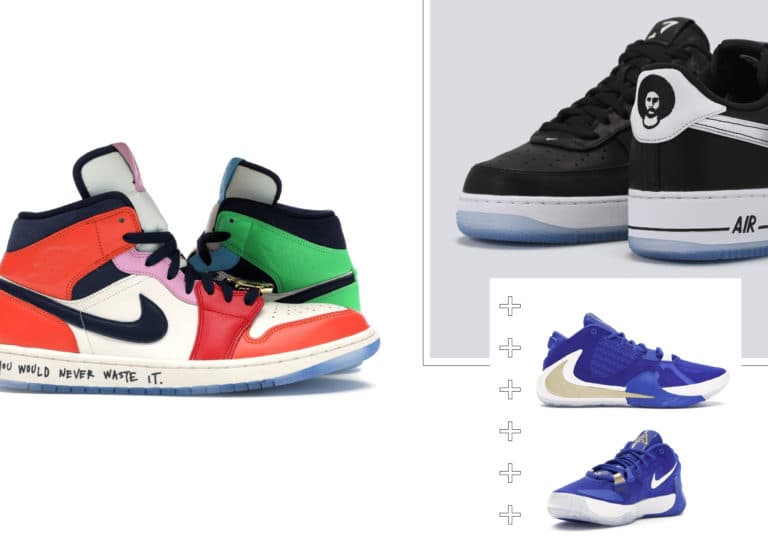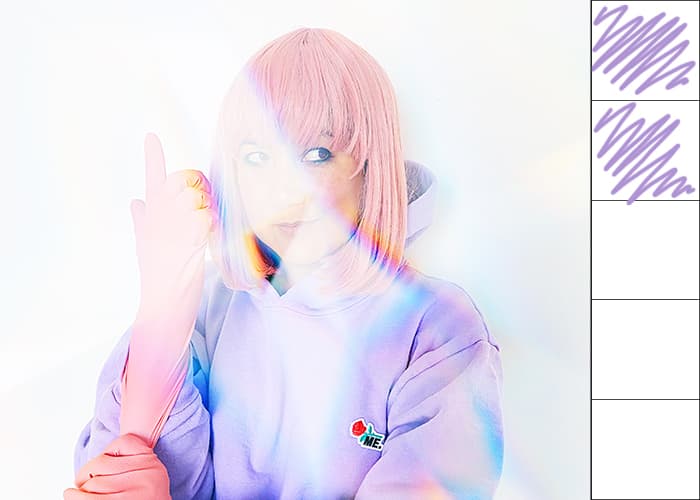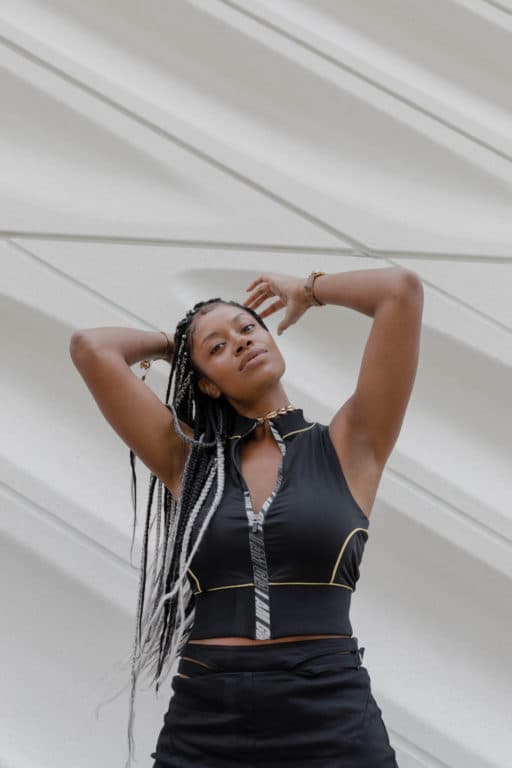As sneakers and streetwear continue to permeate the runways and showrooms from New York to Paris, stylists find themselves spoiled with options in how to create looks that grab your attention, make a statement, and leave a lasting impression. That’s not to say it’s an easy task to blend these worlds together. No one can just walk off the street and throw a pair of Off-Whites into a photoshoot and make it seem legit. For proof of that, look no further than the first three subjects of ‘Behind the Style.’
Sashà Elina de Oliveira, Gia Seo, and Alexis Quintero, all have made names for themselves in the fashion world with their impeccable work as stylists, largely thanks to their trend-forward eye, and their willingness to step outside the box. The StockX team travelled to New York City this past April to spend a day with these three inspiring creatives, working with photographer Lucka Ngo and creative director Juliana Salazar to talk about their journey in fashion and New York, what they’re excited about to come, and their favorite StockX handbag picks. If you’re looking to stay ahead of the trends, read up.

Editor’s Note: Originally hailing from Alaska, Gia Seo has made a name for herself in New York as a leading Art & Fashion director with impressive projects in her portfolio, including a recent adidas x Eric Emanuel collaboration. She grabbed our attention immediately with her self-proclaimed title as “sockfluencer” or “sockhead;” Learn why socks are the most underrated part of building an outfit, her leap of faith into freelance, and what differentiates her today as a director.
Can you introduce yourself?
My name is Gia. I’m a freelance art director based in New York City.
How did you get started? What was your career path up until now?
I started in retail and honestly, I like to point that out. Especially to people who are younger than me and are trying to get in this career path. I think a lot of people think retail is below them. Everything I learned about the customer service industry was from starting my career at Opening Ceremony working on the sales floor 60 hours a week and then from there, I decided I want to move into content. Eventually, I started doing the content at Opening Ceremony and artist collaborations at Dover Street. What I realized was in order to be the best art director, I needed to understand the business. So, I took four years off to be the women’s buyer for The Webster and now it’s been two years since I left that position, and now here I am.
How did you get to a point where you felt comfortable leaving something as secure as a position at The Webster to go and do your own thing?
When I start to get bored. I hit a point in my career where I was like “I’m not learning anything new, I’m not meeting any new people who are like stimulating information or knowledge in my brain”, and I just felt like I was way too comfortable and super stagnant and static. I wasn’t excited to go to work anymore. I think that’s when I decided to leave.
What about your personality do you think has made you stand out as a more attractive candidate for jobs?
I think it comes from being from an immigrant family. My Dad immigrated here almost 45 years ago with no money and a pregnant wife who came here for school. They just lived a really tough life trying to live the American dream and provide for their kids. I remember growing up and seeing that. I have a lot of respect for my dad. I have a lot of respect for someone who doesn’t speak the language, moving to a new country, and starting his own business to support three kids. I always remember that in every job I do that it is all about work ethic and commitment.
So obviously sometimes you do jobs you don’t want to do. How do you stay motivated?
The jobs that I don’t really want to do, I don’t put in my book. It’s extra money to fuel my side projects that I’m actually super passionate about. I’m working with young creatives who might not have the money in order to hire me, but essentially it’s pro bono work right? So I’m taking these big commercial jobs I’m not invested in so I can pocket the money, pay my rent, and also utilize that money to work on smaller projects with my friends to actually build my book and influence the culture in a positive way.
What is your X-Factor? What sets you apart from other directors and stylists?
I think my unique perspective just comes from growing up in a super, super small town and I was completely isolated. I didn’t have internet until I was 18. I didn’t grow up with a cell phone, I grew up with books and playing outside until I was 18. I think that allowed me to not be so overwhelmed by all of this visual stimulation when I moved to New York. I think that’s my unique perspective. I just don’t really give two shits what anyone wants me to do, but I’m willing to partner with you and come to that compromise and I think a lot of art directors will sell out because they see big dollars. Money is not the most important thing for me, which I know is a blessing to say in New York, but it’s really about building my book with the right people, the people I support, and the brands I want to work with.
It can be really easy to sell out. Jobs could pay like three months of your rent. How do you stay in your lane?
There’s usually a series of questions I go through my brain, like alright, after taxes is it worth it? Am I actually taking home money in order to support my team? I have like three or four people who work under me, so every job I take I have to consider them also. The second round of questions is more like, what does this do for my personal career and beliefs? Is it affecting different minority groups that maybe don’t get a lot of press? Am I breaking the gender binary and kind of changing the idea of sexuality? I really think about the kinds of the concepts that are driving the message even before the visual aspect. That’s the way I decide if I want to work with a company or not.
What is an underrated quality that more people should apply?
Punctuality. 100%. I will remember if you show up late, even if it is 10 minutes late. I will remember that you were the person who showed up late and wasted everyone’s time waiting for you, especially when it’s talent. I have built my reputation on always being earlier than most people that show up to set or at least being on time. I think it’s really important.
What’s something you want people to know about you?
I think that when you sell yourself as a brand on social media, it’s really easy to tell this dream that you want to live. I think when a lot of people first meet me there like oh, she’s a rich spoiled kid who loves fashion. I would like to prove that wrong because I’m not a rich spoiled kid who loves fashion. I actually just fell into fashion because of my film background and from there my father would ask me if I borrowed $5 from him every year on the day I borrowed $5. I built my reputation on work ethic and just really surrounding myself with good people. I hope people recognize that good people get you a long way. Good things happen to bad people, bad things happen to good people, but eventually it evens out.
Where do you think fashion is moving now and do you feel like it’s beneficial to everyone?
Yes I do. Unfortunately, I think the biggest changes happening are in smaller communities and brands, but eventually the way I see it is they will start to divide and conquer and eventually the luxury brands will have to follow a suit because they will no longer have that business.
What is the most underrated part of building an outfit?
The most underrated part about building an outfit, which is ironic coming from the sock influencer, is socks. Since I was a kid, my socks and shoes come first and that’s how I build my outfit. I think it just comes from sneaker culture and being a sneakerhead, like you really can’t showcase sneakers without socks right?
Were you a sneakerhead when you were younger?
I was a sock head probably because like I grew up traveling a lot with my parents and my mom was so strict with what I can and cannot buy, but the only thing she would ever let me just lose my mind over were socks. From there like I got into sneakers probably when I was like seven or eight. I remember waiting in line for the Puma speed cats. They were the first thing I ever wanted and then from there was like the K-Swiss reverse tongue, all of the Nike Air Forces, the Janowskis. I think the most underrated thing are the things you kind of layer over your socks.



























